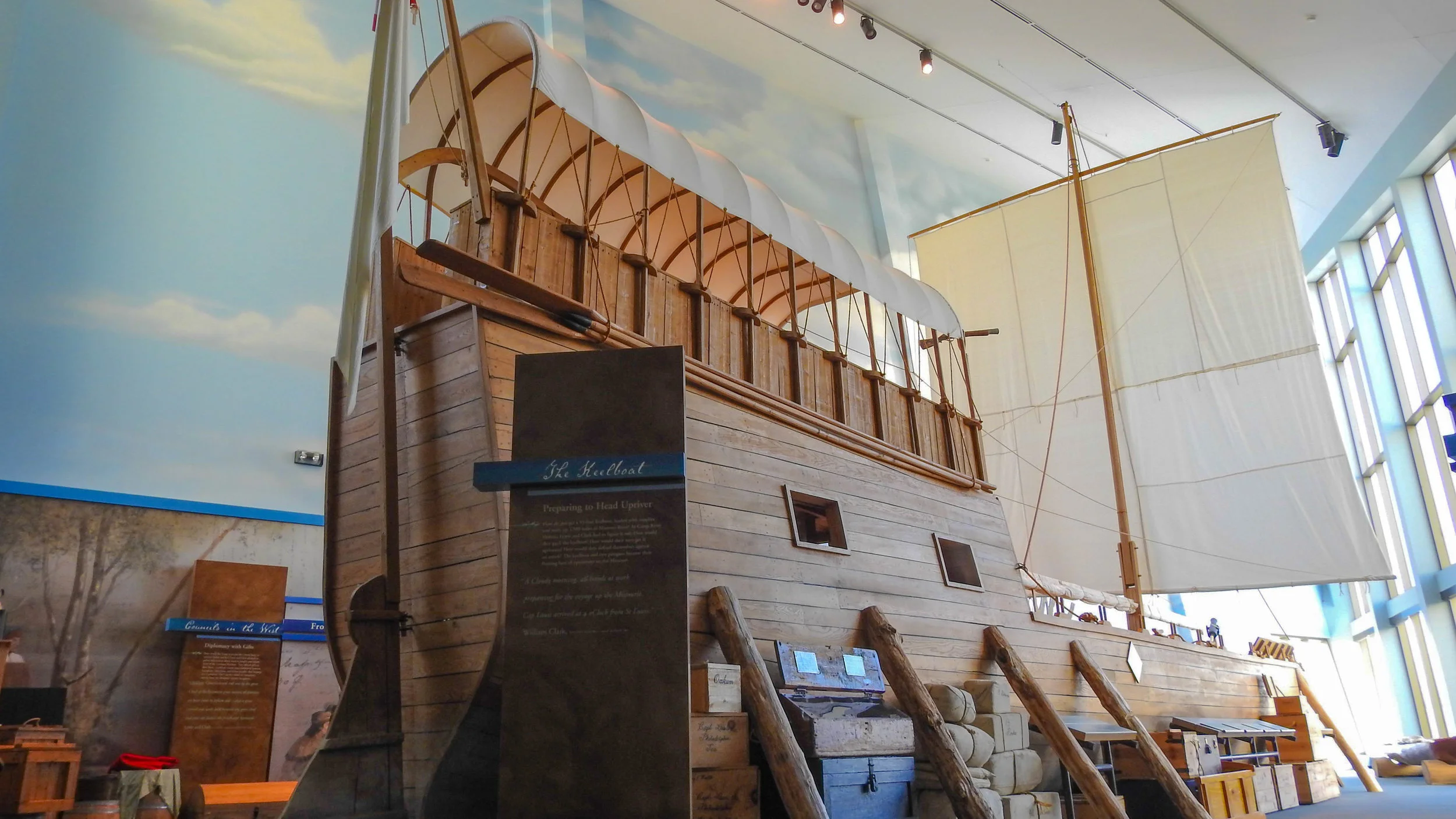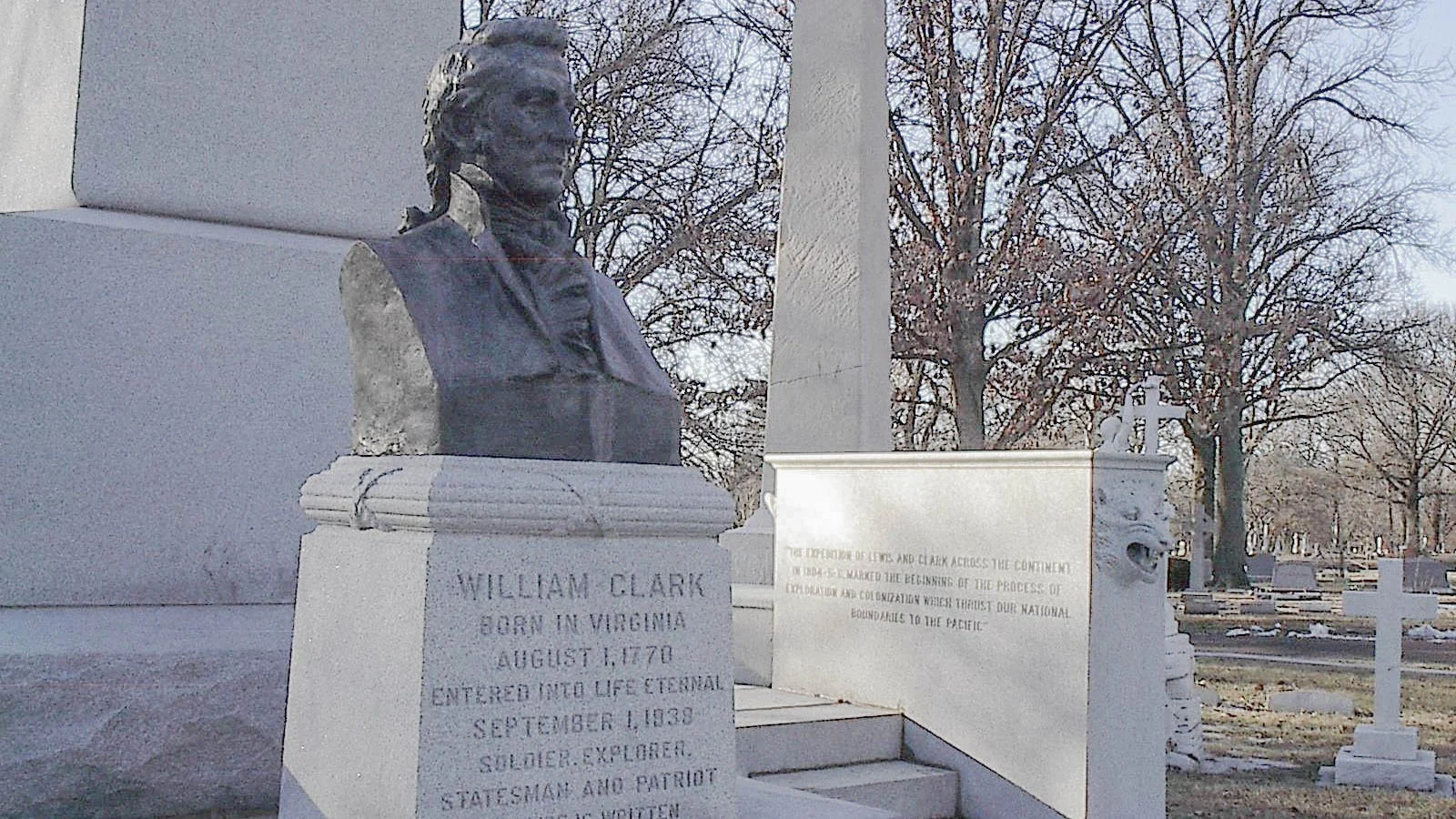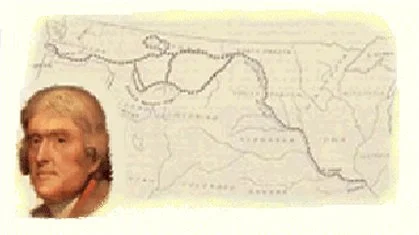Visitors Guide to Lewis & Clark Sites
in the Middle Mississippi River Valley
Keelboat replica at Camp River Dubois
Hartford, Illinois
greatriverroad.com’s coverage of the Corps of Discovery Expedition begins in the south where the Mississippi River meets the Ohio River and ends with coverage of historic St. Charles, Missouri. Included are the two national sites along the Lewis and Clark National Historic Trail in Hartford, Illinois and St. Charles, Missouri. greatriverroad.com also covers Eastern Legacy sites such as Fort Kaskaskia and the Cahokia Courthouse. Additionally, we have included many of the sites that have been selected by the Illinois and Missouri Lewis and Clark Bicentennial Commissions. Finally, we have added several sites that were not recognized by any of the above official organizations but that we feel that provide insight into the Expedition and enhance the visitor's experience. The sites on this page are not a full list of Lewis and Clark sites in the states of Illinois and Missouri.
Page 3 of 3
Sites are listed in a general chronological and a general geographical (south to north) order.
Clark's Grave, Bellefontaine Cemetery
St. Louis, Missouri
On December 11, 1803, the Expedition camped on Cabaret Island. Just opposite the island is a hillside location that would later become Bellefontaine Cemetery. An obelisk marks the spot where Clark was buried after his death in 1838, having spent his entire post-expeditionary career in St. Louis.
Camp River DuBois State Historic Site
Hartford, Illinois
Located near the mouth of the River DuBois (Wood River) and across from the present confluence of the Mississippi and Missouri Rivers, Camp River DuBois served as the home base for the Corps from December 12, 1803 to May 14, 1804. It was here that the men built a fort for the winter, trained for the rigors they were to face, and developed into a successful military unit. Camp River Dubois, located in Hartford, Illinois, has been designated as Trail Site #1 on the Lewis and Clark National Historic Trail and includes an Interpretive Center featuring the "Cutaway Keelboat" and a replica of the winter fort built by the Corps of Discovery. Located on the east bank of the Mississippi River and within view of the confluence of the two rivers is the Confluence Monument commemorating the Expedition's departure.
Camp DuBois
Wood River, Illinois
In addition to the fort at Trail Site #1, the Wood River Heritage Council has also constructed a replica of Lewis and Clark’s winter encampment near the mouth of the Wood River. The Corps of Discovery of St. Charles, the group that is retracing Lewis and Clark's route, has made Camp Dubois their living quarters for the winter of 2003-04. Visitors can see reenactors engaging in colonial activities durong special events.
Confluence Point State Park
West Alton, Missouri
On May 14, 1804 Clark wrote in his journal "Set out at 4 oClock P.M. in the presence of many of the Neighbouring inhabitents, and proceeded on under a jentle brease up the Missourie..." as he and his men departed from Camp River Dubois and proceeded up the Missouri River. This 1,118-acre park is located on the north side of the Missouri River at its confluence with the Mississippi River north of St. Louis and 2 miles south of where the confluence was in 1804. The Missouri Department of Natural Resources intends to restore a natural floodplain reminiscent of what Lewis and Clark might have seen along the lower Missouri River. This will include native vegetation and natural wetlands and feature forests, prairies, and marshes.
Historic St. Charles
St. Charles, Missouri
When Clark and the men departed from Camp River Dubois on May 14, 1804, and proceeded up the Missouri River, Lewis was still in St. Louis attending to last minute business. Clark arrived in St. Charles on May 16, 1804. The men spent their time gathering more information, supplies, and attending dances in this friendly community of about 450 French-Canadians while awaiting for Lewis. Lewis rejoined the Corps on May 20th and on the next day, May 21, 1804, the Expedition "Set out from St. Charles at three oClock after getting every matter arranged, proceeded under a jentle Breese..." Today’s visitors to the Historic District of St. Charles will find the same hospitality as they visit the Lewis & Clark Boat House and Nature Center or view the new statue of the explorers in Frontier Park along the riverfront.
Fort Belle Fontaine Park
North St. Louis County, Missouri
Fort Belle Fontaine was erected in 1805 on the site where the Corps spent there first night after departing Camp River DuBois, four and a half miles up the Missouri River from its confluence with the Mississippi. The Corps spent the last night of the Expedition at this garrison on September 22, 1806, before departing for St. Louis to end their journey the next day.
Sacagawea Statue
Godfrey, Illinois
The Lewis and Clark Community College is the site of a statue honoring Sacagawea, the 15-year old Shoshone Indian who joined the Corps of Discovery in the Mandan villages of what is now North Dakota. The statue was sculpted from a manganese, copper and bronze mixture by Glenna Goodacre who also crafted the design of the new Sacagawea dollar.














